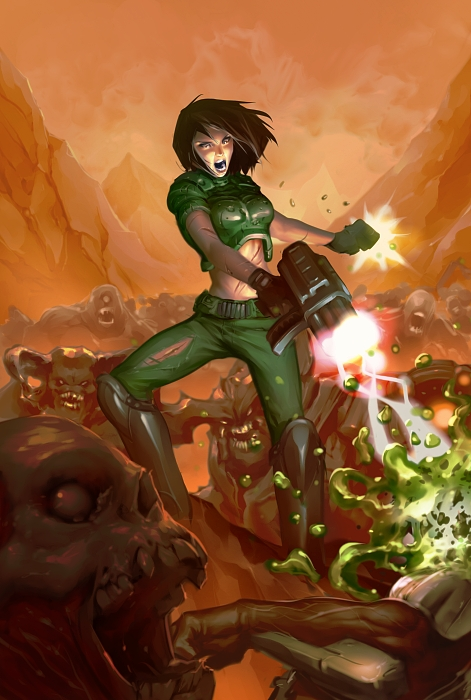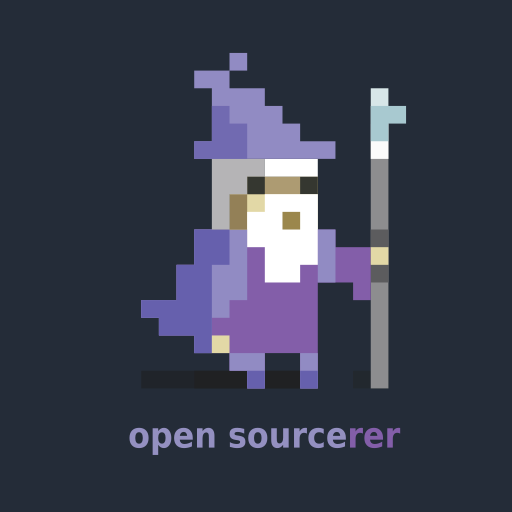Windows is slowly transitioning from a paid and solid OS to freemuim spyware bloated dumb OS.
Slowly? This crap has been going on for years.
Yeah slowly, it started years ago but it’s been getting worse every version, slowly
Fast would be if windows 8 had ads and non uninstallable internet exploder etc
Fast would be if windows 8 had ads and non uninstallable internet exploder etc
Sounds like someone who doesn’t remember windows 8!
Ads: https://hothardware.com/news/microsofts-big-hidden-windows-8-feature-builtin-advertising
They were working on it… and had it working in several places.
Uninstallable IE: https://www.technorms.com/34477/uninstall-internet-explorer-11
While not literally uninstallable… they definitely made it a lot harder.
Windows 7 was the last good version of windows.
Windows 7 was the last good version of windows.
Disagree, 7 wasn’t the worst but the last actually good version of windows was XP service pack 2
deleted by creator
it is
That goes for almost any software.
Why not XP SP3?
Becouse SP3 was the first time Microsoft really let loose with the telemetry iirc
Interesting - I didn’t know that. Thanks!
Windows 8(.1) was still utter trash, I actually "down"graded to windows 7 at the time and it was a bliss.
(it wasn’t the non-stop-ads kind of trash, but the UI suited a tablet more than a desk/laptop)
Yeaaaaaah, I don’t know what Microsoft were thinking trying to force a unified UI on everyone… It didn’t work
Yeah slowly, it started years ago but it’s been getting worse every version, slowly
The freemium model was launched and completed with Win10.
If only every Windows install came with an internet exploder! We wouldn’t have to read Elon Musk X fluff pieces on the news ever single day. And privacy concerns… What privacy concerns?
Isn’t a process happening gradually over years “slowly”?
Would that not be slowly? What would you call slowly in this context?
Decades.
That’s generally what “slowly” means, yes.
I don’t recall such issues with Win98 or XP
Dude, that was 22 years ago… I also remember Prince of Persia as if it were yesterday
deleted by creator
I miss Windows Vista.
The arrow pointing downwards is about to be absolutely destroyed today.
I used to dual boot linux with windows Vista on an old laptop. I had only installed there the first assassin’s creed and Rome total war. Nothing else, never really connected to internet. After 1 year of not using it a part than few total war sessions, vista was so slow that was unusable. It spontaneously became slow for no reason. I completely removed it, left only linux, and that laptop survived 7 years of intensive use, and was still working 10 years later (just too old).
Vista was a scam
Vistas problem was that it was ahead of its time
I both agree and disagree with that statement.
Windows finally got animations and transparency when Mac OS has beaten it by 6 years. Truly an oomph moment.
Windows finally got animations and transparency when Mac OS has beaten it by 6 years. Truly an oomph moment.
The actual technological advancement of Vista was userspace graphics drivers.
Yeah, XP did that with most of the drivers other than graphics, which lead to a reduction in BSOD crashes (because if a user thread crashes, the OS just kills it and continues on, but an unhandled kernel error will crash the entire OS to a generic “turn the screen blue, report and error, and log it, if possible”).
Vista further improved this by moving most of the graphics driver code out of kernel land.
I sort of agree with you, but not in the way I think you meant it.
Vista’s problem was that it’s hardware requirements were too high for it’s time. Operating systems have very long project development lifecycle and at a point early on they did a forward looking estimate of where the PC market would be by the time Vista released, and they overshot. When it was almost ready to release it to the world Microsoft put out the initial minimum and recommended specs and PC sellers (Dell, HP, Gateway) lobbied them to lower the numbers; the cost of a PC that met the recommended specs was just too high for the existing PC market and it would kill their sales numbers if they started selling PCs that met those figures. Microsoft complied and lowered the specs, but didn’t actually change the operating system in any meaningful way - they just changed a few numbers on a piece of paper and added some configurations that let you disable some of the more hardware intensive bits. The result was that most Vista users were running it on hardware that wasn’t actually able to run it properly, which lead to horrible user experiences. Anyone that bought a high end PC or built one themselves and ran Vista on that, however, seemed quite happy with the operating system.
I had no problems with Vista. I also built a new PC for it though.
It started with Windows 8
Ready to feel old, that was 11 years agooooo^o
Ah maan, why’d you have to tell me that, it still feels like it came out just 3-4 years ago tops
It started with Windows 8
Win8 wasn’t freemium. Win10 was.
True but it’s when Microsoft started to implement apps and such for tablets and hybrid laptops along with office 365.
Because at this time the internet was still slow, not always on and optional on most computers, and Microsoft did not know if and how they should integrate the internet into the OS. The only thing they had at the time was some link to MSN on the desktop, and activeX (???) Where you could display websites on your desktop or within your program, but without the Browser controlls.
Windows 2000 🫶
Even though Windows is very user-friendly. I think Windows 11 might be my last. The amount of anti-privacy that’s implemented and what I have to do just so it doesn’t constantly phone back home is kind of ridiculous.
Off to pick my flavor of Linux.
I find it strange that people call it user-friendly, despite it doing a lot of things hostile to the user.
Because user-friendly means that even a tech-noob can easily set it up and use it right away without much researching.
-
If an OS requires ANY AMOUNT of command line, you have lost about half the population.
-
If an OS asks any remotely difficult question with techno lingo, you have lost an other quarter.
-
If an OS doesn’t work out of the box the way it should (like all their hardware functioning including audio), you have lost all the other not technology inclined people.
Windows is setup that it requires none of that. It may do something that you find horrific, but most people do not care as long as it works.
Windows devices are set up like that.
If you give someone a blank hard drive and Windows install media, they need to to all of those things.
Have you installed Windows 10 or 11 lately?
The most difficult part are the partitions, but even that is done mostly automatically and doesn’t allow you to continue if your setup wouldn’t work.
It comes with decent default drivers for most generic hardware, and automatically installs drivers for more exotic hardware if it supports Windows Updates.
And it most definitely does not require a single command line.
Maybe some technical jargon, but even that you can just skip by pressing next and it won’t fuck up anything.
Linux works exactly like that too, unless you start tinkering with it
Yes, it required a command line to perform disk partitioning and even a basic pre-erase.
It also asked about 20 more questions than necessary, and I had to answer “no” to each and every one of them.
Where Linux asks for a username, Windows insisted multiple time that I had to create an account. The only workaround was to physically unplug the Ethernet cable.
There’s also a step where you need to lie about your regional settings to avoid getting plastered with preinstalled trash.
If you blindly click “next” through a Windows install, you will get the most bloated, horrible, invasive experience possible.
There Windows installer is an absolute fucking minefield.
If an OS requires ANY AMOUNT of command line, you have lost about half the population.
Half? It’s way more than half.
90% and I feel that’s generous to the supposed 10%
-
“user friendly” doesn’t mean “in the users’ best interests”, it means “easy to use”.
newbie or somewhat experienced user?
I would say I know the basics of Linux due to owning a Pi and messing around with it time-to-time but no where near experienced.
TL; DR: From personal experience as a Raspberry Pi tinkerer and Windows evacuee, I recommend Linux Mint.
Raspberry Pi OS is essentially Debian compiled for ARM with the LXDE desktop. They used to use LXDE, and it is my understanding they forked LXDE to make their “Pixel” desktop. Being Debian, it uses the APT package manager with .deb packages.
Linux Mint is a fork of Ubuntu, which itself is a fork of Debian. It uses the APT package manager and .deb packages. The exact same commands to install, say, LibreOffice on a Raspberry Pi can be used to install it on Linux Mint.
Cinnamon is the flagship desktop, and I think is a reasonable answer to “What if Microsoft had kept developing the Windows 7 desktop instead of trying to make a tablet OS?” I chose Cinnamon pretty immediately because it felt more like the Windows I had grown up with than Windows 8.1 did.
I think Fedora and Ubuntu are easy recommendations!
and Ubuntu
No. It’s way to complicated to circumvent Canonical’s attempts at vendor lock-in. One might just as well pick a more distribution from the beginning.
most users simply do not care. if it works, it works
deleted by creator
If only the Xbox controller wouldn’t randomly disconnect on Linux. No, i bought it because i read it works well here.
This is my biggest downfall with Linux, lack of integration with gaming but I’ll learn to leave without it, I guess.
When was the last time you tried? Steam Deck has allowed Valve to dedicate lots of time to fine-tuning Proton and it works with virtually every game now, save the ones with specific kinds of online anti-cheat systems.
You can also just add your Epic and GoG games to Steam Launcher and then they’ll be launched with Proton as well.
I heard some recent steam thing made it pretty great now? Or was that just marketing talking?
proton is pretty much there, thinking to jump ship to linux - already use it in all my work for decades
2024 the year of Linux. As long as we can avoid the toxic “don’t use Mint, use Arch instead users”.
Also the memey “xxxx the year of Linux”. Because that’s been going on for 40+ years now. 😅 You use it, or you don’t. Your OS is a tool, not a belief system.
I’d just like to interject for a moment. What you’re referring to as Linux, is in fact, GNU/Linux, or as I’ve recently taken to calling it, GNU plus Linux. Linux is not an operating system unto itself, but rather another free component of a fully functioning GNU system made useful by the GNU corelibs, shell utilities and vital system components comprising a full OS as defined by POSIX.
Many computer users run a modified version of the GNU system every day, without realizing it. Through a peculiar turn of events, the version of GNU which is widely used today is often called “Linux”, and many of its users are not aware that it is basically the GNU system, developed by the GNU Project.
There really is a Linux, and these people are using it, but it is just a part of the system they use. Linux is the kernel: the program in the system that allocates the machine’s resources to the other programs that you run. The kernel is an essential part of an operating system, but useless by itself; it can only function in the context of a complete operating system. Linux is normally used in combination with the GNU operating system: the whole system is basically GNU with Linux added, or GNU/Linux. All the so-called “Linux” distributions are really distributions of GNU/Linux.
Was that really necessary?
I think it’s a copypasta because we’re doing overdone Linux memes in this thread.
Ah, yeah, that makes more sense.
It’s a copypasta.
This person gets it
Year of Linux on the consumer PC. Linux has been dominating the server space for… 40+ years now.
That’s interesting, I remember reading a post to comp.os.minix about 32 years ago about a Finnish student who made his own OS. It was just a kernel that barely worked. Wish I’d known it was already dominant in the server space for over 8 years, could have gotten a head start!
I hope that student’s project turned out ok, even if it’s not big and professional like GNU. Did he ever add support for non-AT hard disks?
I’m not quibbling with nerds over the timeline, I was just echoing the original poster’s words.
So Linux has been dominating the server space since before it existed? Cool!
True it’s a tool. Just like a car. We get attached to one way of working with that tool, but then advancements come and a different tool starts to look interesting. Think gas->electric windows/mac->Linux.
Every year is “The Year of Linux.”
According to the last magazine I checked about this, 1997 is actually going to be the year of Linux on the desktop.
And this housing bubble is totally going to burst any day now, too.
But you should be using Arch instead ot Mint.
(I use Arch BTW)
It’s the only reasonable solution.
(I too use Arch btw)
My Steam Deck uses Arch btw.
No, do not use Arch
(I too? use Artix BTW)
Honestly, I’ve been thinking about switching to Linux with my next system since about a month after I built my current system, over 4 years ago. That’s how long it took for me to be sick of Microsoft’s bullshit in Windows 10.
That said, I’m not looking forward to figuring out how to get into Linux. It’s probably easier than I think, but having done 0 research (as I don’t need a new system yet), the impression I have is that there’s a ton of stuff I’m going to have to figure out before getting started.
Try a live CD. It’s easy to get started without hearing a bunch of stuff.
If you’ve got a spare USB drive, have a look at Ventoy. It’s a program that lets you put multiple ISOs (disc images) onto a drive and select which one to boot from at startup.
Most distros have free bootable ISOs to download, which let you try that distro without installing it. They usually have an installer built in so that you can install your chosen distro from a desktop environment.
Installation is probably the trickiest part, but even that’s not too bad as long as you pay attention. Once you’re on the desktop, it’s as easy to use as Windows.
Linux has a learning curve that’s steep to the average Windows or Mac user. The guys suggesting Arch are saying it’s easier than the other distros, but you have to remember that most of those coming from the other two aren’t going to know what a command line is. I had to guide someone through it when they wanted to install VMware on Pop!_OS, I would not put them on Arch. (And to those suggesting the AUR, that still needs a command line and now you need to inspect the PKGBUILD for security purposes.)
Start with a live CD version (a USB thumb drive acts as your C: ) or a virtual machine (like VirtualBox and install Linux on it) just to try things out. Then do a full switch when ready.
It’s at the same time much easier and much harder than you think. You’ll have most of it working very easily and then find some little thing annoying you with some tool and take days to find a replacement that feels just right.
Yeah, you’re right about the last part.
I mean, if you like knowing what your machine is doing, Arch is one of the best options.
Gentoo is for when you want to know what your compiler is doing.
It’s also ironically easier to use day-to-day than some other commonly suggested distros. Sure something like Mint or Pop_OS is much much easier to set up but later on when you need a newer version or something that isn’t in the repos. Too bad! That doesn’t exist. Time hunt down a PPA and hope it’s trustworthy.
With Arch 99.9% of the time if it’s not in the main repos it’s in the AUR. And since it’s rolling there’s no worry of doing the big upgrades (been seeing plenty of posts about issues with the transition from Fedora 38 -> 39 lately). I have daily driven Arch for almost 10 years now and there have only been a handful of times across that whole span where a
pacman -Syuactually broke something.debian has never broken anything here in twenty+ years of use. I’VE broken shit, but debian never has.
It’s comparatively easy to not break things if you’re like ten years behind. 😉 But sure, Debian takes pride in its stability. I just like having recent versions of everything.
To be fair it is always my fault when things break not Arch’s. It’s not like Arch does anything on its own.
Completely agree. Ran Arch for about 10 years and had like three breakages that were all my fault (didn’t read news before a manual intervention. Once the battery died). But every time I could fix that by booting the current live image. No data loss.
The main thing that we need imo is something like SteamOS that is installable on every PC and has the backing of valve, sadly it’s still limited to the deck
becouse it may not be the perfect desktop OS experience (for your average linux user anyway), but game mode is absolutely a game changer for people who just want to play games on their computer 90% of the time
Yes support from a major company would set a Linux flavor as a general public friendly option. Right now the fracture between all the Linux versions is a deterrent for beginners.
The only distro I tell people not to use at this point is Ubuntu
Thanks for the heads up, I was Ubuntu install it. /s
Badum chhhhh
Don’t use Mint or Arch, use Void!
Just command line.
shit dude, that’s about the only place where I have to use windows 😂.
“YOU KNOW WHY I CLICK LATER? BECAUSE THERE’S NO OPTION TO CLICK NEVER! I’D LIKE TO CLICK NEVER! I NEVER WANT TO DOWNLOAD THESE STUPID BULLSHIT FUCKING UPDATES EVER AGAIN!”
Then click that you aren’t interested.
That setting may not scream in your face, but it is far from hidden.
psst… I hear you’re looking to ditch Microsoft. You might like what you see over at c/linux
uuu, nice, smooth 😏 👍
deleted by creator
Why buy a new system when you can just run Linux on the existing system
Because the majority of people don’t want to expend the time nor effort installing Linux.
It already starts with choosing your distro …
The point is to transition to a subscription based OS. You subscribe, pay a monthly fee for services like Teams, Outlook, etc.
The LTSC editions probably won’t ship with that bullshit, so it’s probably safe to say that they can still be usable even after completely transitioning to a subscription based OS.
Bully for them, but I don’t use Teams, Outlook, Office365, Onedrive, or Skype anyway. So the only way Microsoft is going to make a dime off of people like me is to charge a subscription for the base OS, which I ain’t paying.
I know what you mean. Likewise, I’ve never paid MS for any of their products (or any other company for that matter, lol 😂). So, if pushing comes to shoving and LTSC still comes with this bullshit, bye bye dual boot 👋 😉.
Microsoft isn’t looking to make money off of you.
They get the gross of their income from businesses.
[This comment has been deleted by an automated system]
Uuum, no.
To be perfectly honest, building software for a fixed set of hardware products is a piece of cake. Doing it for every bit of hardware on this earth, yeah, that is PITA. So, even though I don’t like MS at all, I have to hand it to them in the conpatibility department. Not as backwards compatible as Linux, but they sure are a close second.
Buidling software for an already stable as fuck platform (*BSD) is a lot easier, plus you already know what hardware it’s gonna run on, lol. You cherry pick security/bug fixes and everything else regarding optimizations gets thrown under the carpet… and of course you charge your customers for the security/bug fixes, that’s always a plus 👍.
[This comment has been deleted by an automated system]
Is supporting every bit of hardware on earth why Linux shows ads everywhere?
I run Linux daily, I’ve never seen an ad (unless it was in a browser).
Exactly. Saying windows is problematic has nothing to do with supporting multiple hardware configurations and everything to do with Microsoft having no empathy for the user experience.
Yeah, agreed, you have a point there 👍.
I mean the hardware can be pricy but there’s basically none of this in macOS.
Don’t apple products require you to sign in with an apple id to use them together?
And every OS update tries to dark-pattern trick you into enabling iCloud for all your services. And System Settings constantly nag you about setting up Apple Pay or other Apple services you aren’t using. Apple has less ads, but they still have nagware traps all over the place. They also place the free tier of iCloud just big enough to get you hooked, and just small enough you’ll overflow it sooner than later. For most consumers, paying $2/mon to make the nag go away is easier than finding out why they are running out of storage. Annnd…profit.
I suppose if you want to use their cloud features.
But I mean they don’t plaster nags and ads over core OS features.
I’m not necessarily advocating buying Macs but the OS itself is experiencing less enshittification.
Aren’t LTSC a pain to get (legally) when you’re not a corporation or something like that?
Yeah, they are. Which doesn’t stop you from pirating them. I use them on all my rigs IF I had to to use Windows.
Sir, do you have a minute to talk about Linux? 👉👈
Literally op is Satan so…
I have a feeling people here like Linux…
I have Arch btw
We don’t have a choice.
Please do not let Linux find out I said this, I have kids.
New convert here, it’s mostly dope. Edit: here as in on linux
I was actually going to put it on an older laptop the other week, but Ubuntu wouldn’t run on it.
This was after spending an hour trying to get into the BIOS, only to find that the keyboard doesn’t actually work before the Windows splash screen comes up… I mean who the fuck designs it like that?
Also the drive bay doesn’t fit the SSD properly, so it just boot loops if you use the little caddy. Refuses to even Post.
Now I hate computers again.
Hold shift when you click restart in windows, you can access the firmware through windows recovery.
Only with UEFI. This wasn’t that. I initially thought it was Windows 10 fucking with Fastboot and causing it to skip.
This was after spending an hour trying to get into the BIOS, only to find that the keyboard doesn’t actually work before the Windows splash screen comes up… I mean who the fuck designs it like that?
Does your laptop have multiple usb ports? And did you try them all?
I had this issue even on my PC until I tried a bunch of different USB ports and found one that worked.
Uhh I just realized that since it’s a laptop the keyboard is part of the laptop… Well I’ll still leave this in case it helps anyone
Yeah, I had to plug in a USB keyboard in the end.
What laptop was it so the rest of us can avoid this tomfoolery in the future?
Is there a newbie way to install it? It looks pretty convoluted…
The best way to install is to use a LIVE edition. This is useful beacuse you have a nice installer intergrated and you can try it before you have to install the OS on the computer.
For download of this edition, see www.debian.org/CD/live
From there, if you come from Windows, I would raccomend KDE, as it is stable and customizable. Search “KDE screenshot” to see what it looks like, and if you like it.
If you want this, here the direct URL to download: https://cdimage.debian.org/debian-cd/current-live/amd64/iso-hybrid/debian-live-12.2.0-amd64-kde.iso
Debian should also be lite enough for older machines, and it is the most stable distro I’ve tried. With this OS, there are already web browser, media player, office suite,… but you can also download Steam, emulators and lots of software
For help you can DM me.
From experience, this is a stable streamlined process that is now easier than installing Windows.
Been some times since I installed Windows, but Calamares is a great tool
It’s easier than installing Windows. The problem is that someone hasn’t already done it for you.
Yes. Did you know that you cannot partition disks in a GUI while installing Windows? You can only select partition to install to or format the entire disk, all advanced actions must be done with
diskpartcommands in Command Prompt (Shift+F10).Also OOBE is shit, luckily you can do it offline thanks to
C:\Windows\System32\OOBE\bypassnro.bat. And the additional setup like debloating is also time-consuming.BypassNRO is actually an NT command script, not a DOS batch file. It’s actually a .cmd, which actually sets a registry value and reboots the system (probably the only bit of the Windows core I am aware of that is open source).
Also the Panther (the codename for the boot.wim installer) Setup has some really basic partitioning tools. You can create a smaller partition, delete, format, and that’s it. You have to use DiskPart or Disk Management to do more.
(accidentally deleted this)
Thanks. Your earlier comment is still visible to me, please try deleting it again.
Anyway, I installed both Windows 10 and 11 last month on clean drives and I remember not being able to create multiple partitions in the GUI. Is there a difference between editions perhaps?
Or just wait until you are booted into Windows and use the Diskmanager.
Honestly, these complains from you Linuxians are always just so dumb and uninformed.
You are right that there is a way to do this post-installation but I have been down this rabbit hole 4 times and all I can say is:
Nope nope nope. This is actually more pain.
Why? Shrinking the
C:drive is difficult or damn near impossible when Windows is installed on it, which is why I always install Windows to a smaller partition (120 GiB as I don’t play modern games) and move user folders toD:, and then leave some space forE:or Linux.Disk Management will only let you shrink the disk by a very small amount. This is because Windows has a lot of “unmoveable files”. You need to disable recovery, virtual memory and hibernation to get a chance at shrinking that partition, and you may need to run all kinds of defrag commands. I did this on 4 PCs and the first 3 times, this was enough.
In the 4th case, just this week, I became sick and got stuck at my grandma’s place far from home. I needed a Linux installation badly, but there was only a laptop with 40 out of 220 GiB free after cleanup, and just a single partition (with Windows preinstalled, of course). It did not want to budge and reported 0 MB shrinkable space. I tried every trick mentioned online before resorting to buying Aomei Partition Assistant. It queued the action of shrinking the drive by 20 GiB (alleged minimum for Mint) and estimated 18 minutes to complete the operation. It told me it cannot do that while Windows was running so it gave me the option to use WinPE or PreOS mode. WinPE did not work so I retried with PreOS. The computer booted into VGA text mode and this appeared on the screen:
============== AOMEI Partition Assistant PreOS Mode ============== The program is executing, please wait... Operation 1 of 1 Resizing Partition Hard Disk: 1 Drive Letter: C: File System: NTFS Partition Label: OS Size: 220.46GB => 200.45GB Total:0 %, Current:0 %This was on the screen for about an hour, and the PC was apparently under load with fans spinning. The program might be stuck but could how could I tell? I eventually forced the computer to shut down. I hadn’t made a backup because I did not have a large external drive (would have installed Linux on part of that, instead). Was my grandma’s only computer ruined? Would I be stuck for 2 weeks without a computer?
Luckily, the PreOS program ultimately had no effect on the drive, and I managed to negotiate a refund from Aomei. Then I realized I could boot into Recovery Mode and try
diskpartfrom Command Prompt there, which miraculously worked. Also pretty tense because it did not give any indication of progress, just threw control back to me when it finished. I was relieved when I successfully booted into Windows on that shrunk partition. Other than having to enter Windows Safe Mode to disable RAID storage in BIOS, the Linux installation went fine.
So this is why you install Windows on a reasonably small partition or resize it before using a preinstalled copy. This is not useful just for Linux but when you want to upgrade to an SSD (as I did with my parents’ and the other grandparents’ computer), you only want the system partition there so you don’t need to buy a bigger drive; also wear leveling will work better if the drive is not close to full, and HDDs are easierbto recover if they fail. With separate OS and data partitions, you just use Clonezilla or something to clone the Windows (
C:) partition to the SSD bit-by-bit, then disconnect the old drive and fix boot using a Windows recovery medium (necessary because of Microsoft’s shenanigans), make changes to the boot order and now you’re booting from an SSD with a fallback copy on the HDD!To be clear, I also prefer GUI utilities (except when automation is needed of course). But
diskpartis pretty easy - it’s essentially a state machine with built-in help so it’s very noob-friendly for a CLI program. And you just saw that it can save hours of hassle.Or you just don’t partition at all.
Never had a problem with it in the last 15 years on Windows. You can usually fix the OS with some command lines. And if you can’t, you just reinstall and Windows will move all your files into a Windows.old folder.
That’s not good use of space, storage is still expensive where I live (partly because of piracy tax). A simple copy to “Windows.old” will not save the bootloader so it won’t really work as a backup – it’s dead space now. Your OS partition (and the EFI one) must be copied bitwise if you need to back them up (but as you correctly mentioned, you probably don’t).
It makes a lot of sense to separate installation and data, especially when the PC will get used by old people (who are more likely to screw up something badly) or power users. And making backups of data is as easy as
robocopy D: F:\Backup /mir. Yes, I also have lots of experience using and managing Windows PCs in my family and work.
deleted by creator
I’ve always been a power user but never minded Windows until W11. Luckily WSL was a great gateway drug for me and I ended up switching to Linux full-time after living inside WSL for a few weeks.
Highly rexommed Mint Cinammon or Pop!_os
I suggest Kubuntu, great ui, solid base, niche problems can be googled away
I suggest Manjaro. Arch made easy.
Use EndeavourOS if you want easy Arch, Manjaro is kinda bad.
But really if you want an easy system, go with Mint or Fedora. Arch isn’t designed for ease nor first-timers.
There’s a tool for making bootable windows USB drives called Rufus that gives you options to remove things like requiring a Windows account, TPM requirement for Windows 11, secure boot, etc when you’re cloning the iso to the USB drive.
Oh wow! I’ve used Rufus a handful of times to make bootable windows USB drives and I never knew this
Still bugging people about to connect an account
I have a Win7 on my PC which I only use for gaming but Steam is telling me it’ll stop working on Win7 in about 80 days or so. I installed Win7 on it for a reason but soon it’ll be my first ever computer running Linux.
This is the way
I’m just curious… You are ok with not installing any security updates for months (or even years)?
I guess so. I don’t really think about that. As long as stuff works on my end I don’t worry about updating it. I’d be happy if I could just install the security updates because updating the OS generally just breaks stuff and slows things down.
Why don’t you just turn those notifications off?
If I had known it was possible to make a local account instead of having to use my outlook for my desktop, I totally would have gone that route a couple years ago. Only plus side I can think of for not doing it is that I have immediate access to my outlook.







































